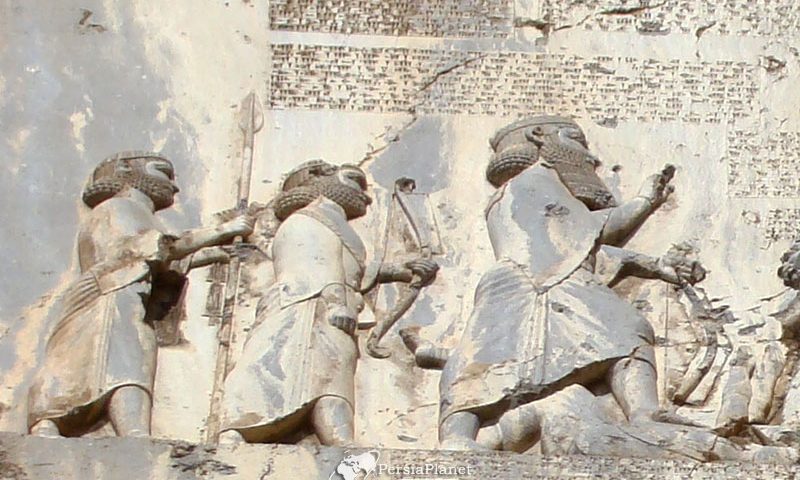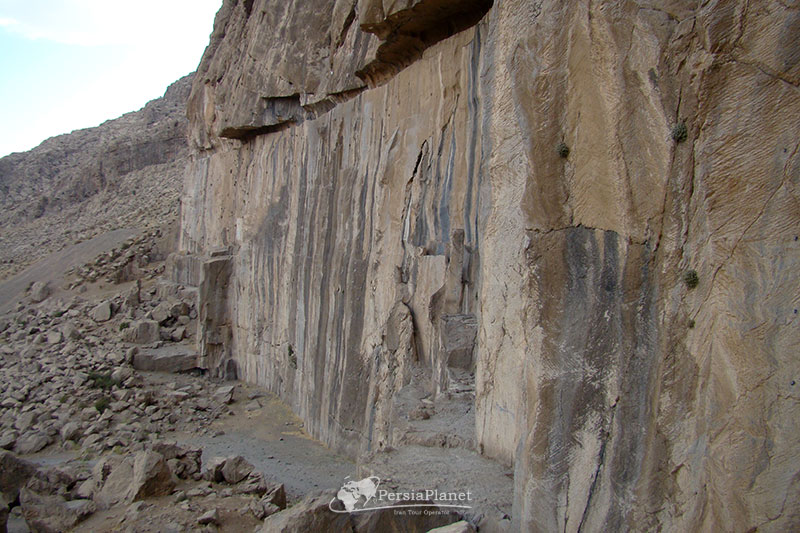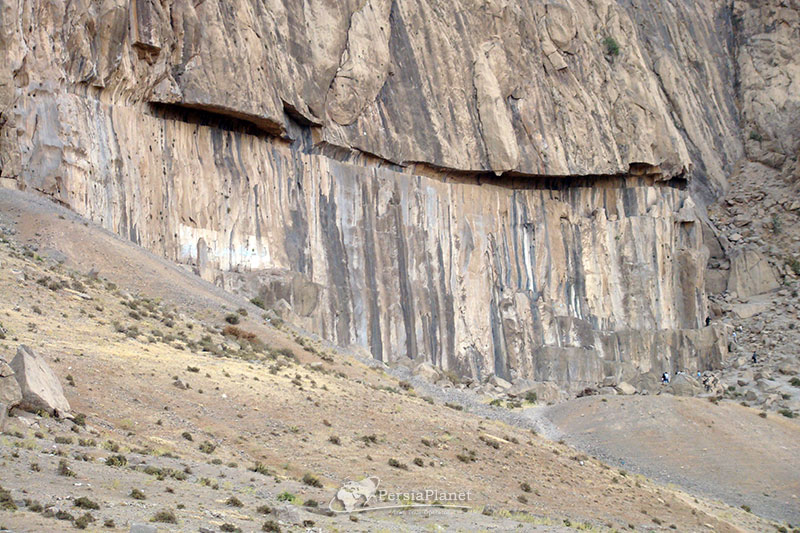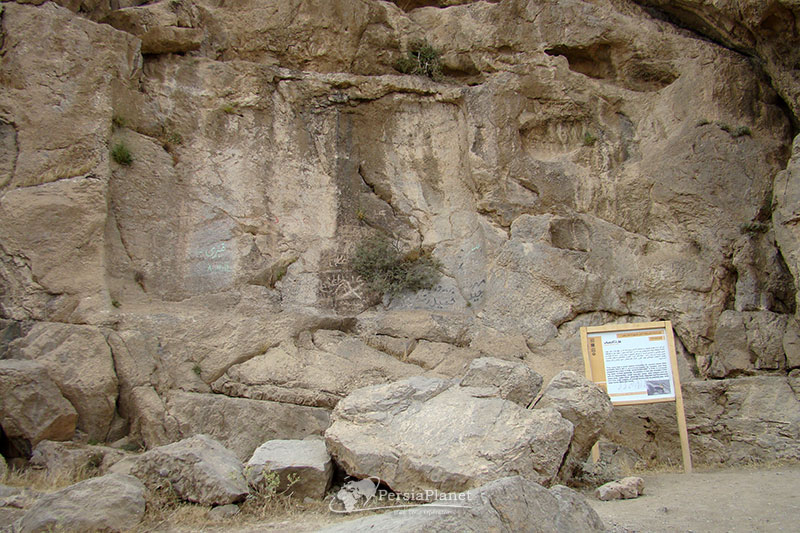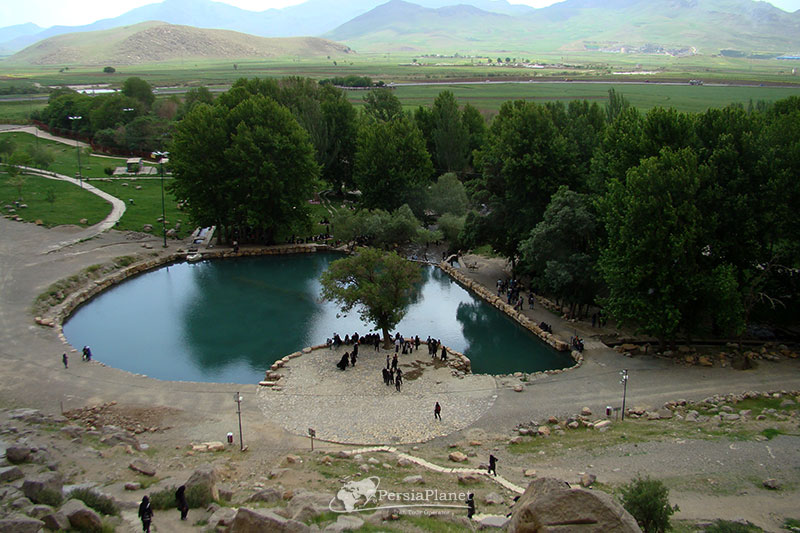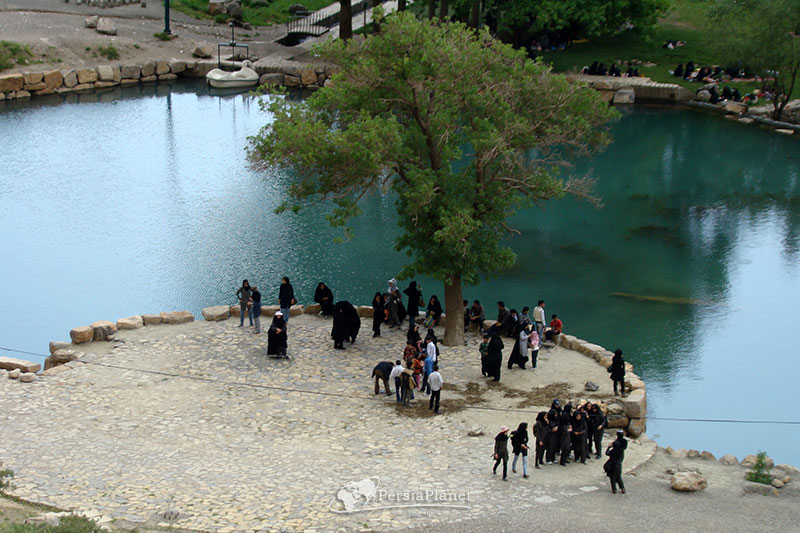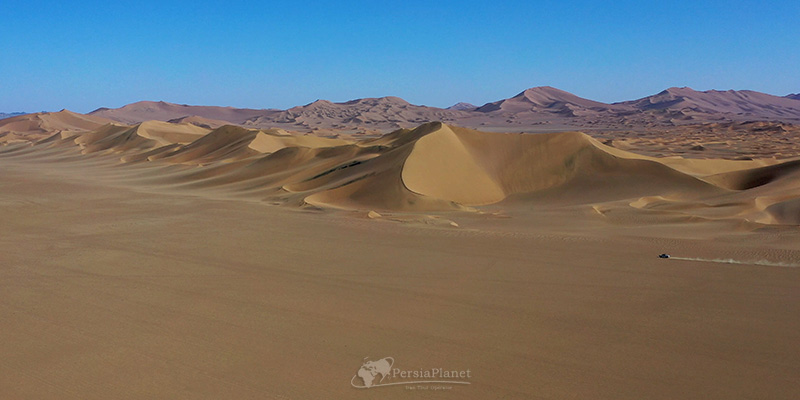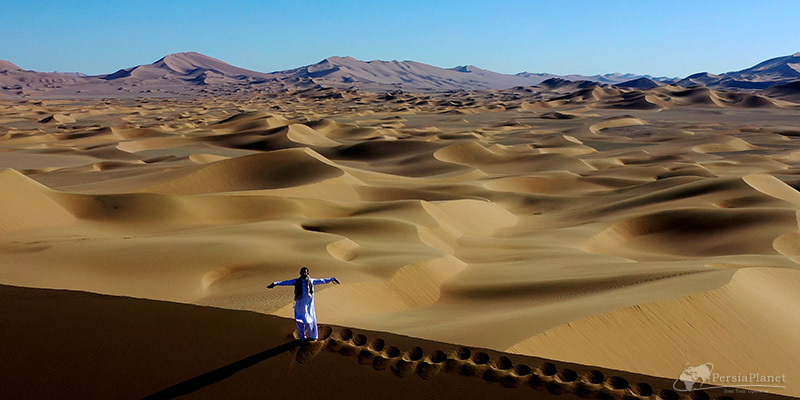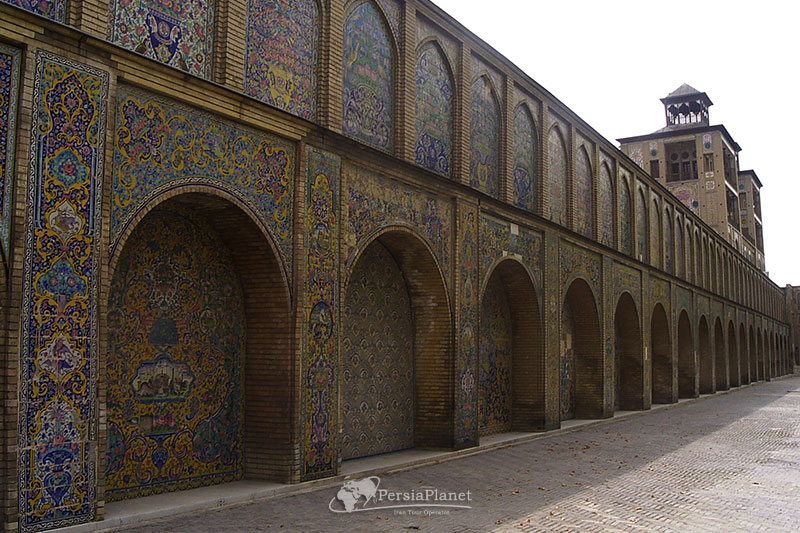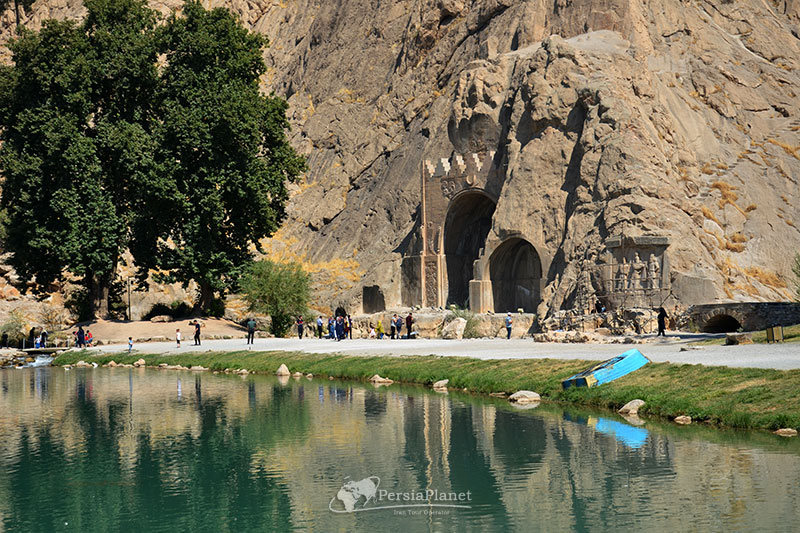Bisotun (Biston, Behistun, Bistoon)

Taq-e Bostan, Tagh Bustan
August 12, 2021
Shahsevan Tribes (Nomad people in Iran, Shahsavan)
August 14, 2021The famous Biston complex located in the city of Biston in Kermanshah, has a large number of historical monuments such as the statue of Hercules, Biston Bridge, Shah Abbasi Caravanserai, the reliefs of Mehrdad II, Farhad Tarash, etc. and is therefore one of the important archaeological sites in Iran. One of the works in this collection is the inscription and carved relief of Darius, which is on the UNESCO World Heritage List. In addition, the existence of numerous caves on Mount Biston indicate the presence of humans in this area during the Paleolithic period. Due to the existence of historical monuments that date back to about four thousand years ago and continue until several hundred years ago, Biston is considered a treasure trove of Iranian historical monuments, 28 of which have been registered as national monuments of Iran.
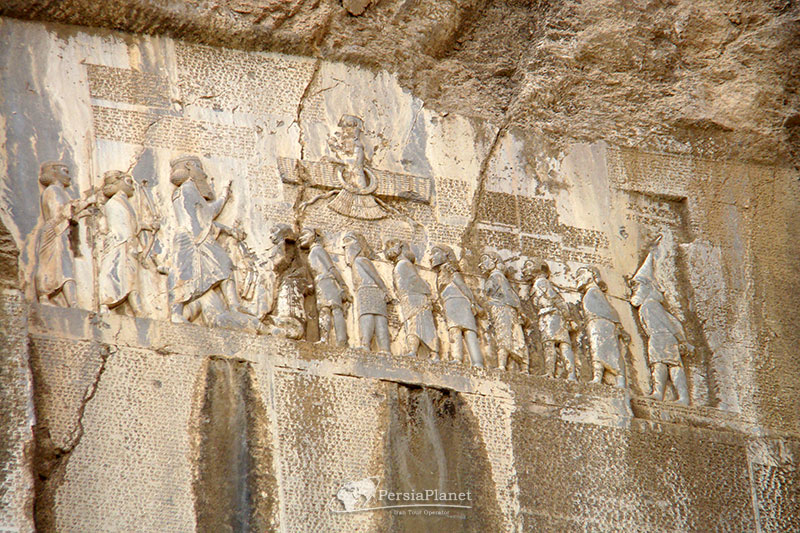
History of Biston
Biston complex is one of the most important historical sites in Iran, which has been considered by kings for various reasons. Among those reasons, we can mention its favorable climate and good geographical location. Interestingly, the Biston plain was located near important transportation routes such as the Silk Road, which shows the reason for the attention of the kings of different dynasties. Because Mount Biston was a passageway for caravans and troops, it was a strategic area for the Iranian kings to shine.
This historical and archeological site includes the works of various periods from prehistoric to post-Islamic. Hunters’ Cave and Markharl Cave from prehistoric period, material shrine from Median period, Biston inscription and relief from Achaemenid period, Hercules statue from Seleucid period, Sang-e-Blash, Goodarz lithograph and role of Mehrdad Ashkani from Parthian period, Biston Palace, Farahad-Tarash and the Sassanid bridge (Khosrow) from the Sassanid period, the Ilkhani caravanserai from the Ilkhanid period, the Shah Abbasi caravanserai, the inscription of Sheikh Ali Khan Zanganeh and the Biston bridge (Safavid bridge) from the Safavid period.
Hassan Pirnia wrote about Biston in the book History of Ancient Iran:
Biston is a mountain that reaches a height of four thousand feet and at the foot of it, springs come out of the mountain. For a long time we do not know when it was, the caravans stopped here.
Ibn Hawql, a Muslim geographer of the fourth century AH, had said:
Behston Mountain is a high mountain that can not be reached at the top and the pilgrims’ route from Neishabour to Halvan passes under it.
Yaqut Hamwi, a seventeenth-century geographer, is one of the few Muslim geographers to mention the ancient monuments of Mount Biston in his book. he writes:
Behston is Sassanids village between Hamedan and Halvan. It is four steps away from Hamedan and eight Farsang away from Kermanshah. Beheston mountain is high and you can not go to its peak. The pilgrims’ path passes just below it and its wall, from top to bottom, is smooth, as if shaved.
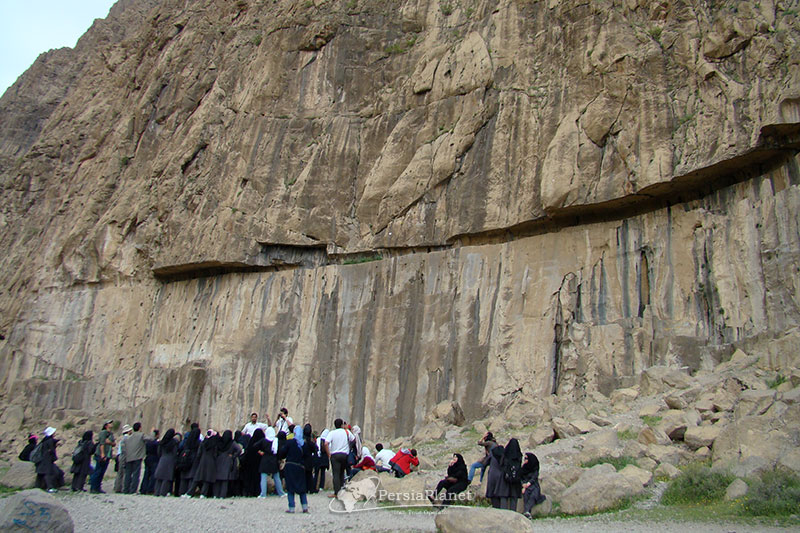
Bisotun inscription
The inscription of Biston, which is dedicated to the victory of Darius I of the Achaemenids over Gaumatus the Magus, is the most important artistic and historical work of the Achaemenid period and the oldest text in Iranian literature and therefore, is one of the most important historical documents in the world. Near this inscription, there are stepped works that the sculptors apparently used to access the place of the inscription and after finishing the work, it was carved to eliminate the possibility of access to the inscription and the relief. The inscription is carved on limestone stones and shows signs of a brown glaze that has changed color over time. It seems that the sculptors covered the inscription and embossed map with this unknown glaze to increase its durability.
The inscription of Biston, 7.8 meters wide and 22 meters long, has been carved in three languages: Ancient Persian, Elamite and Akkadian (New Babylonian) with cuneiform. The text of this inscription is located in such a way that the writing related to each person is close to him.
The ancient Persian text is mentioned in five columns that Ahuramazda is seen with human faces on top of this inscription. There is a shining crown on his head which indicates his greatness and divinity.
The Elamite text is written in eight two-part columns and the Akkadian text in one column. In addition to these three main texts, you can see 11 other small inscriptions on the rock that are related to Darius and his captives.
The beginning of this inscription is dedicated to the introduction of Darius and his family, which is as follows:
I am Darius Shah, son of Vishtasp, an Achaemenid, king of kings, I am now a king in Persia. My father was Vishtasp, the father of Vishtasp is Arsham, the father of Arsham was Ariarmene, the father of Ariarmene was Chish Pish, the father of Chish Pish was Achaemenid. Hence we call ourselves Achaemenids. We have been a race for a long time, our family has been a king for a long time. Eight members of our family were kings before us, I am the ninth king. We were from two royal families.
Since the first four columns of ancient Persia deal with the events of the reign of Darius, it has great historical value. The inscription continues with respect to Ahuramazda and his forgiveness. In addition to introducing his 23 dependent lands, Darius records and describes the battle with the rebels who claimed the kingdom in the first year of his reign. Darius ‘victory in 19 wars, Cambyses’ death, Frortius ‘revolt and execution in Ekbatan, Gaumata’s revolt and repression, Darius’ victory over the Scythians, establishing peace and security in his vast empire, refraining from lying and defending truth, advising future kings, etc. The inscription has come.
Bisotun base relief
The bust of Biston, 6 meters long and 3.20 meters wide, depicts Darius’ victory over Gaumat the Magian (false Bardia) and the capture of the rebels. The image of Ahuramazda is above the heads of the captives, which gives Darius the Great the ring of power.
In addition to the symbol of Ahuramazda, you see Darius the Great placing his left foot on the chest of the magician Gaumatus, who fell to the ground under his feet. One foot and two hands of Gaumata are carved upwards as a sign of supplication. In this relief, Darius wears a long robe and a congressional crown that shines like a jewel on the left side of the inscription. He raised his right hand to worship Ahuramazda.
The symbol of Ahuramazda with a ring in his left hand is right in front of Darius and he also raises his right hand which is a sign of good prayer for Darius or his approval. Ahuramazda wears a cylindrical hat with a circle with eight feathered stars; Just like the shape on Darius’ crown.
The 9 captives are tied together with their hands tied around their necks and standing in front of Darius. The relief of Darius is 180 cm; The archer and the spear standing behind him are about 150 cm tall, and the captives are depicted as being about 120 cm tall. These captives falsely called themselves kings.
Biston’s inscription and relief have been severely damaged by geological factors such as erosion, rain and wind, human destruction and ignorance.
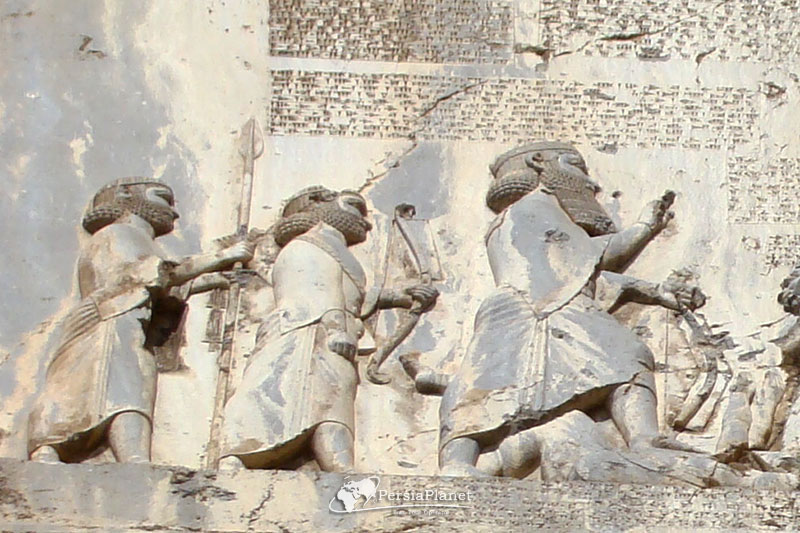
Statue of Hercules
The statue of Hercules is one of the attractions of the historic complex of Biston, which always attracts many tourists. This statue dates back to the Seleucid-Parthian period. The time of construction of the statue is estimated to be 153 BC, which coincides with the reign of Mehrdad I Parthian and the end of the Seleucid rule.
At that time, Hercules was considered one of the most beloved gods and therefore many clay and stone statues were made from him. This strong personal sculpture shows a body with curly hair and beard resting on the skin of a lion. The statue of Hercules stands on a platform about 20 meters long, and while holding a cup in his left hand, he is lying half-lying on his left side, with his right hand on his right foot and his right foot on his left foot.
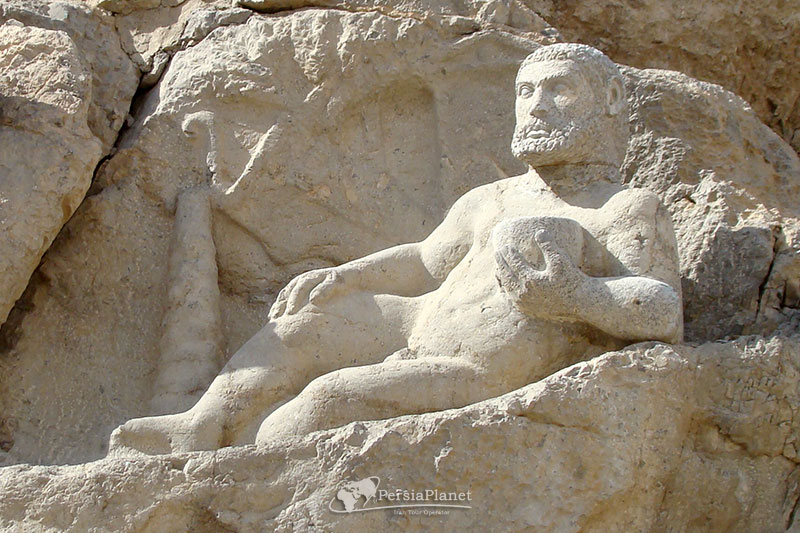
Biston Palace
The ruined and unfinished palace of Bistoon is located right in front of the Bistoon inscription and belonged to Khosrow Parviz, the Sassanid king. According to archeological excavations that have been carried out periodically since 1976, this palace, which was built only around the walls, remains unfinished for some reason and later becomes an inn. However, the caravanserai was destroyed by an earthquake and a village was built on it during the Qajar period.
Shah Abbasi Biston Caravanserai
Shah Abbasi Caravanserai is another unique historical monument of Biston, which is located on the old Kermanshah-Hamadan road and was registered as a national monument of Iran in 1974. This caravanserai, which has an area of more than 6,000 square meters, is built in the style of Safavid caravanserais. The construction of the mentioned work probably started by the order of Shah Abbas I Safavid and according to the inscription on its entrance, apparently it was completed by Sheikh Alikhan Zanganeh.
The caravanserai was renovated during the reign of Nasser al-Din Shah and was used as a grain depot in the Pahlavi period. After the Islamic Revolution, he was in charge of the prison administration for 17 years, until the Cultural Heritage Organization finally took it back for restoration.
On each side of this caravanserai there are four porches, two stone platforms and seven arches, and of the four towers in the four outer corners, one tower remains on the northwest side and the remains of a tower on the southeast side remain. After the entrance, a domed porch can be seen, which includes sections such as the royal. The work of changing the use of Shah Abbasi Biston Caravanserai was started in 2014 so that this historical place could start its activity in the form of a traditional five-star hotel with a capacity of 100 guests.
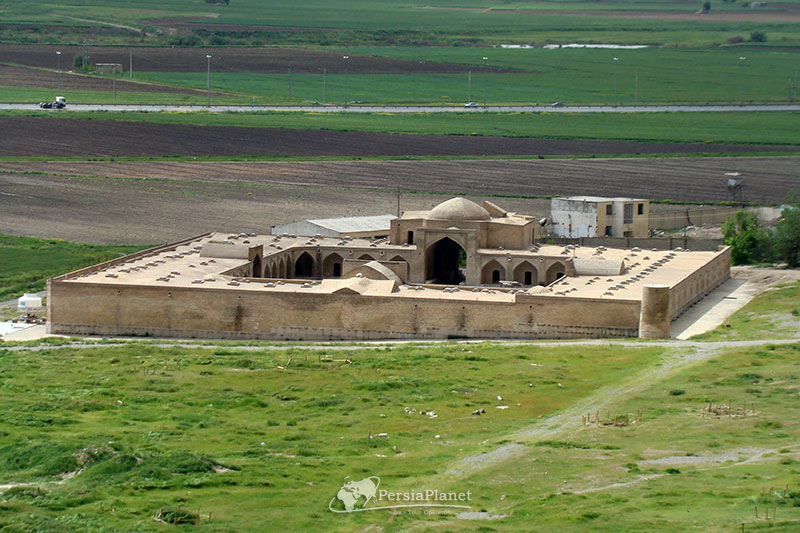
Hunters (Shekarchian) Cave:
The cave, also known as Biston Cave, is located just above the statue of Hercules and was probably a temporary refuge for hunters who used it for butcher hunting as well as hiding from wildlife. Shekarchian Cave was registered in 2001 as one of the national monuments of Iran.
Excavations and excavations in the Hunters’ Cave, in addition to bone and stone tools, found the bones of hogs, gazelles, wild horses, wild cows and deer, as well as the forearm bones of a human being, which date back to 70,000 to 40,000 years ago. According to archaeologists, the forearm bone belonged to a Neanderthal human.
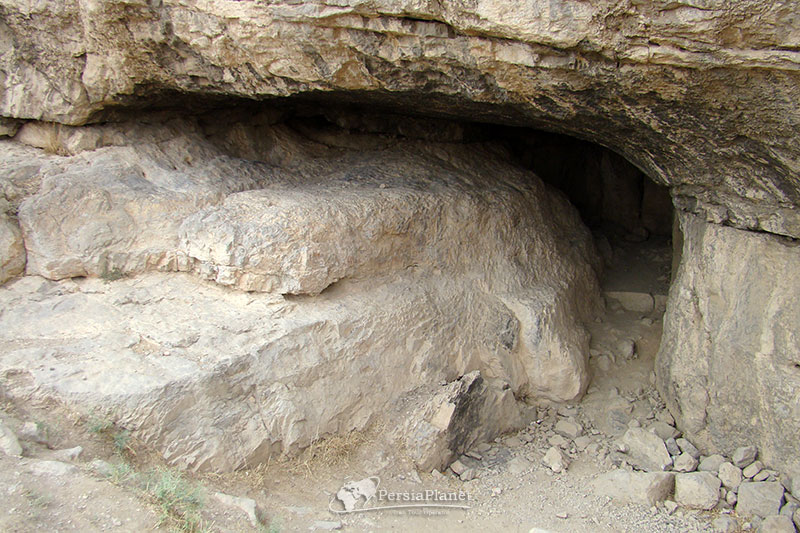
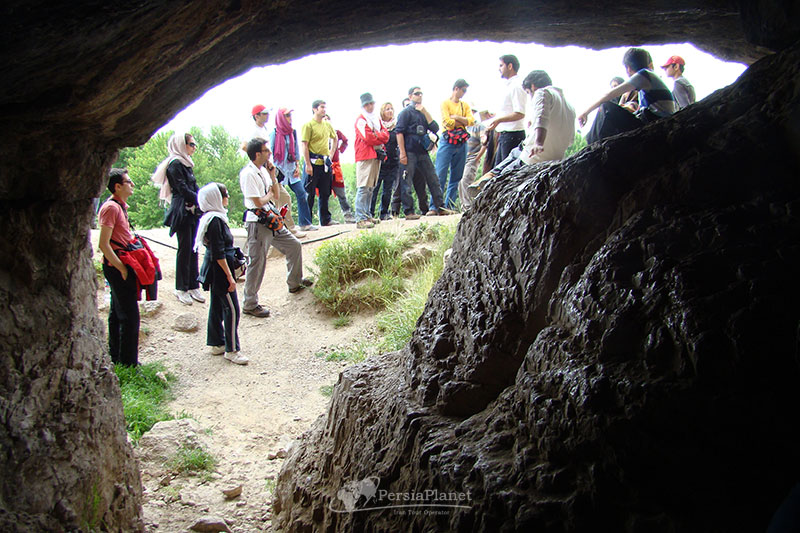
Visiting time of Taq Bostan
Visiting hours: the first six months of the year from 8:30 AM to 7:30 PM and the second half of the year from 8:30 AM to 5 PM
Holidays: Tasua and Ashura mourning days, the death of Hazrat Mohammad, Imam Reza, Hazrat Fatemeh and June 4 and 5
Religious holidays are based on the Arabic calendar and change every year according to the normal calendar.
The best time to visit Taq Bostan
The province has hot summers and cold winters. For this reason, if you plan to travel to this province, the best time to visit Kermanshah province is spring and autumn.
Mehdi Gholami.

